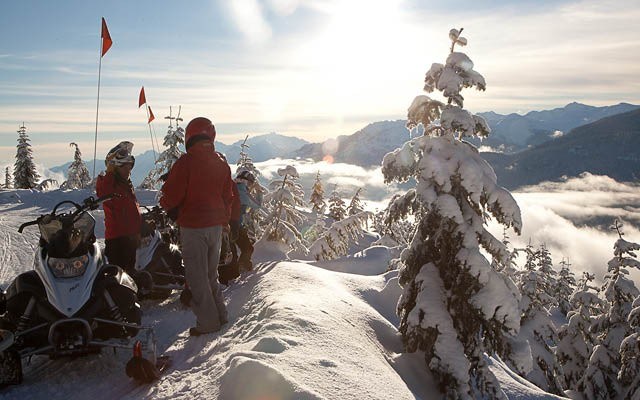Snowmobile operators are being asked to keep out of the 21 Mile Creek watershed.
At least one abandoned snowmobile on the bottom of a Whistler lake is raising a red flag for Whistler Councillor Jayson Faulkner. He's concerned because the lake involved is inside the watershed providing a significant amount of Whistler's drinking water.
"Anecdotally, there's a suggestion that there's as many as five snowmobiles sitting at the bottom of Rainbow Lake, which is our primary surface water supply," said Faulkner.
The lake is above the 21 Mile Creek intake in an area designated as a no-go zone for mechanized vehicles.
"We have zero tolerance on this," said Faulkner. "We have a responsibility to our community for things like our drinking water and anyone who lives in Whistler would be rather shocked at knowing there's snowmobiles festering away at the bottom of our drinking water lakes."
Faulkner said testing of the water from the 21 Mile Creek intake indicates there aren't any measurable hyrocarbon-based contaminants in the water.
He noted the sleds sank to the bottom of the lake after the sled owners tried to cross the frozen lake, but found the ice wasn't thick enough to support the weight.
Faulkner said backcountry users on mechanized vehicles have been going into the watershed for years despite the existence of signage indicating the zone is closed to dirt bikes, ATVs and snowmobiles. Faulkner recently attended a meeting set up by Alistair McCrone with Recreation Sites and Trails BC to address the issue with snowmobile club members. Leaders in the sled community were asked to communicate to their club members the importance of obeying no-go zones. Faulkner said the meeting went well and he came away feeling the snowmobilers in attendance understood the importance of staying out of the watershed.
A clear sign line was installed at the top of the 21 Mile Creek watershed this fall by McCrone's team.
"This is the last chance for the snowmobile community," Faulkner said. "If they cannot find a way to ensure that their people don't go into that area then we'll seek a complete closure for the whole Callaghan Valley side for snowmobile use."
McCrone said the signs advising recreationalists of the ongoing watershed closure were installed along the ridge between Rainbow Mountain and Mount Sproatt, with more boundary signs to be installed this winter.
"Trespassers may be subject to fines of up to $1,000," said McCrone. "Legislation also includes provisions to seize the snowmobiles of violators."
One key challenge to keeping vehicles out of the watershed is a lack of enforcement in the area. Faulkner said many of the small recreational vehicles are unlicensed and unregistered so those who don't care can easily use the watershed without being caught.
"The community could do more to ostracize and police their own for those kinds of things," said Faulkner.
While mechanized vehicles aren't allowed into the watershed, hikers, cyclists and ski tour groups are using the area without restriction. Faulkner said non-mechanized users of the area alerted the Resort Municipality of Whistler to the issue by filing complaints with the RMOW.
Meanwhile, the Whistler Off Road Cycling Association and a number of other agencies are currently seeking funding to build a 10-kilometre multi-use trail off the Flank Trail up to the alpine in the Rainbow Sproatt zone.
WORCA asked The Squamish-Lillooet Regional District for $20,000 a year to help fund the construction costs over a three-year building window. The SLRD directors referred the request to the budget committee for feedback.




